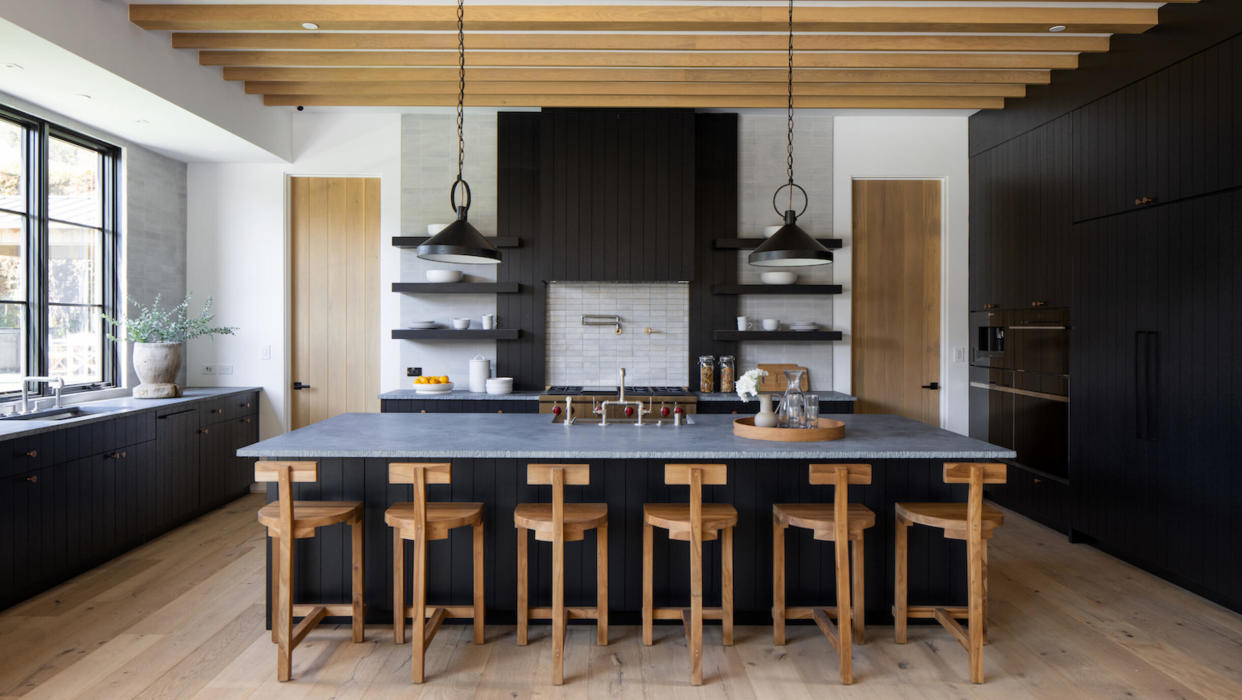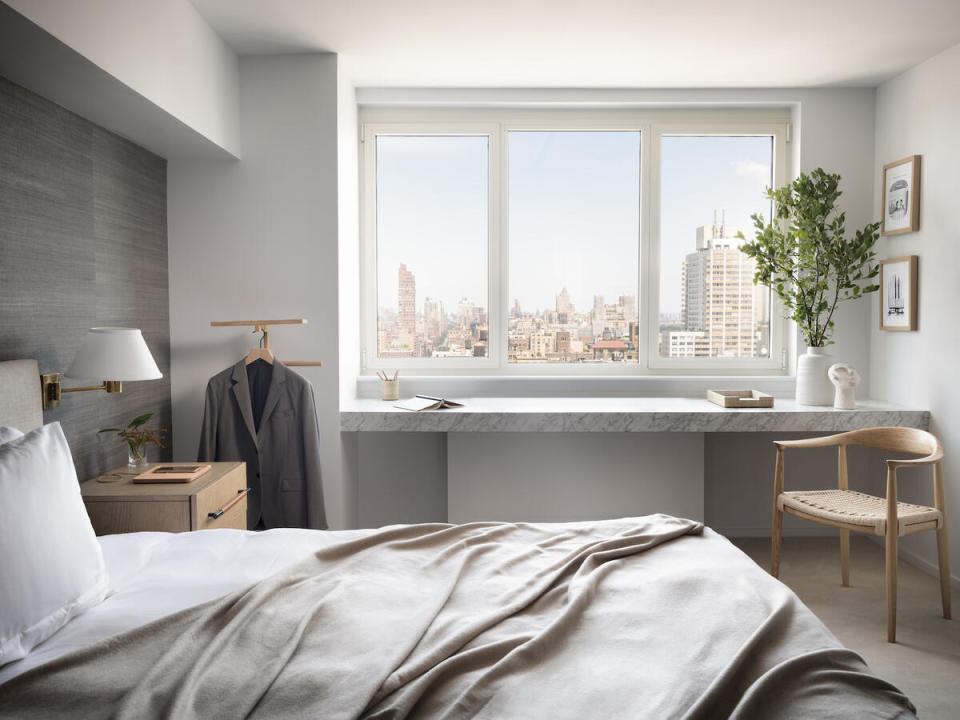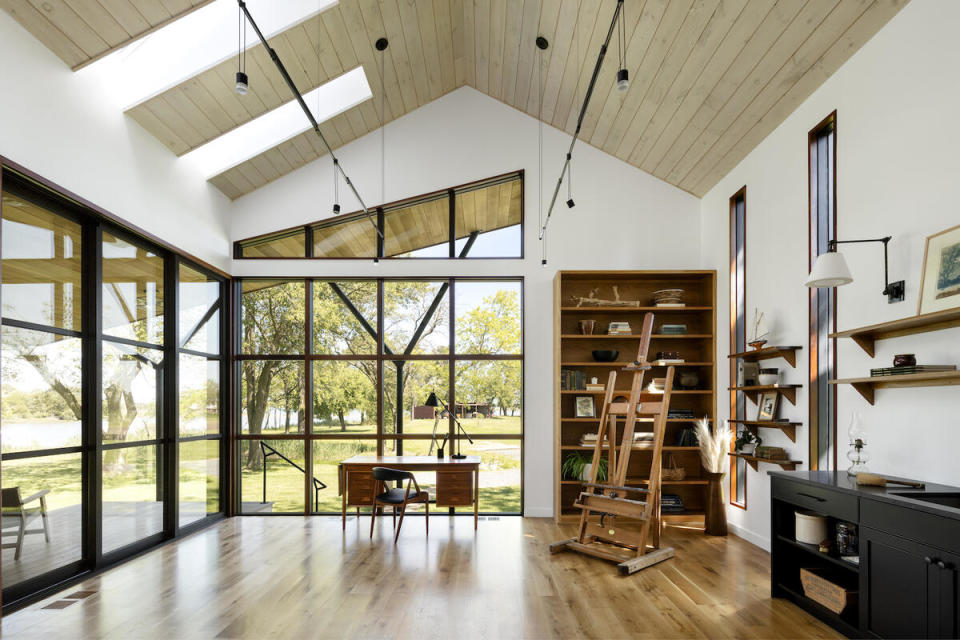7 designers on how to create a healthier home for clients

wellness | Jun 15, 2023
By leveraging the latest research and technology, designers can create healthier spaces for clients. We asked seven designers to share their secrets to getting the conversation started.
Less is more
Those who seek out New York–based interior designer Gala Magriñá are often attracted to her holistic approach. But for clients who aren’t educated on the topic, she likes to meet them where they are, asking questions like: Are healthy materials important to you? How much do you prioritize fresh air? “I normalize the topic [of wellness] and have a conversation about it, the same way I would talk about colors,” says Magriñá, who received her healthy materials certification from Parsons School of Design at The New School. One of her favorite ways to connect health and wellness for clients is to create a sanctuary in areas like the bedroom, leaving family photos and Pelotons outside to ensure the space is theirs alone—a lifestyle shift that clients feel immediately upon moving in. Another way to make a major impact? Use the least amount of materials when it comes to furniture to reduce toxins in the home: “Less is more when it comes to building a healthy home.”

Leave it at the door
Los Angeles–based designer Mandy Cheng approaches designing a healthy home for her clients much like going to the gym: They have to want to change. For those who are committed to making the shift, Cheng is well versed in the venture, even going the extra mile to build a house in Florida that’s LEED platinum certified (the highest LEED rating, which maximizes indoor air quality, access to natural daylight and recycled materials). But she has one simple rule for minimizing germs and toxins: “The easiest immediate solution is to take your shoes off at the front of the house.” Cheng suggests creating a foyer space so clients can remove their footwear easily. And regardless of scope of work, she emphasizes the importance of maintaining a healthy home once the design is complete—especially when it comes to routinely changing water and air filters. “Owning a home is a big responsibility,” says Cheng. “With that comes doing things to make sure it operates in the healthiest way possible.”
KNOW your Domain
When sourcing products like HVAC or water filters, Minneapolis-based interior designer Victoria Sass prefers to connect clients with experts for professional advice. But that doesn’t mean health and wellness aren’t top of mind—her firm’s interventions just take a different shape. “People come to us for things like rugs made from natural materials and non-synthetic and sustainable furnishings,” says Sass. Whether or not a client has expressly asked for a healthy home, she focuses on sourcing investment pieces that they will live with for years to come. “We want to use things that are not part of a throwaway culture,” she says. “The more specific it is to a person and their home and their needs, the longer they’re going to keep it. Our approach is a little more holistic rather than geeking out over the latest trend in sustainable materials. You never know what the future asbestos of the world is going to be. My firm tends to shy away from trendy materials for that reason and stick with the old classics, tried and true.”
Fresh Start
Health has always been at the forefront for Los Angeles–based interior designer Kishani Perera, especially when it comes to the home. After suffering for years from autoimmune issues, which were triggered by black mold in remodeling projects she worked on for clients and developers, Perera began to research how to create a healthier living space for herself—and now, for her clients too. For new builds, she suggests a duct-free HVAC approach, deploying mini splits that allow more targeted and energy-efficient heating and cooling by room, along with easy access, cleaning and maintenance to avoid systemic mold issues. Her biggest value-add, she says, comes in projects that are ground-up construction where she can select less harmful materials. “The building itself is [often what’s] giving off toxins, whether that’s mold or chemicals,” she says. “If we can come in at the very beginning and start the construction process with nontoxic materials that have the longevity to not decay over a long period, that’s ideal.”

Keep It Clean
“I think there’s an understanding that if we are going to be doing something that’s healthy for the environment, it is more than likely also healthy for people,” says Maryland-based interior designer Laura Hodges. A sensitivity to chemicals like perfumes and room diffusers often left her with allergic reactions or migraines, which got the designer thinking about how home products affect our health. For that reason, Hodges avoids VOC-heavy items like vinyl wallpaper and carpets, and espouses the use of safe cleaning products. “If you’re using chemicals to clean, they stay airborne,” she says. “We give our clients a maintenance packet at the end of the project, and we encourage them to use natural products like vinegar and baking soda to keep things clean.”
Easy Access
Jamie Gold considers accessibility one of the defining factors of wellness. The San Diego–based wellness design consultant, Mayo Clinic certified wellness coach and author of Wellness By Design: A Room-by-Room Guide to Optimizing Your Home for Health, Fitness, and Happiness got into wellness design through her studies on aging in place. “My initial inspiration was that when my grandmother was in her 80s, she had a stand-alone shower and was afraid that she might fall,” she says. “That was a realistic fear, and I never forgot that feeling of helplessness. When I became a designer, I wanted to work with homeowners and caregivers who were dealing with that same challenge: making older people’s homes safer, more functional and more comfortable.” Now, Gold consults with clients to translate their health concerns into concrete changes in their homes, from rearranging a kitchen to facilitate the preparation of healthy, fresh meals to minimizing barrier entries to increase accessibility and reduce risk of falls.
It Feels Good to Be Home
Almost 10 years ago, New York–based interior designer Joshua Smith merged his love of wellness with interior design. His six pillars of balanced design break down each project into the realms of functionality, beauty, comfort, personalization, senses and connection. By emphasizing those elements, he also encourages clients to rethink how they’ll use the rooms of their home, and to make sure to prioritize the sacred spaces, like the living room, where they can unwind and relax. The goal, he says, is to create a space that inspires clients to walk through the door and exhale—a wave of physical and emotional relief. “The reason it feels good to be home is that when we design our homes consciously, our bodies and brains trigger feel-good hormones that reduce the cortisol built up from our hectic everyday lives. A calm washes over you when you’re home.”
This article originally appeared in Spring 2023 issue of Business of Home. Subscribe or become a BOH Insider for more.

